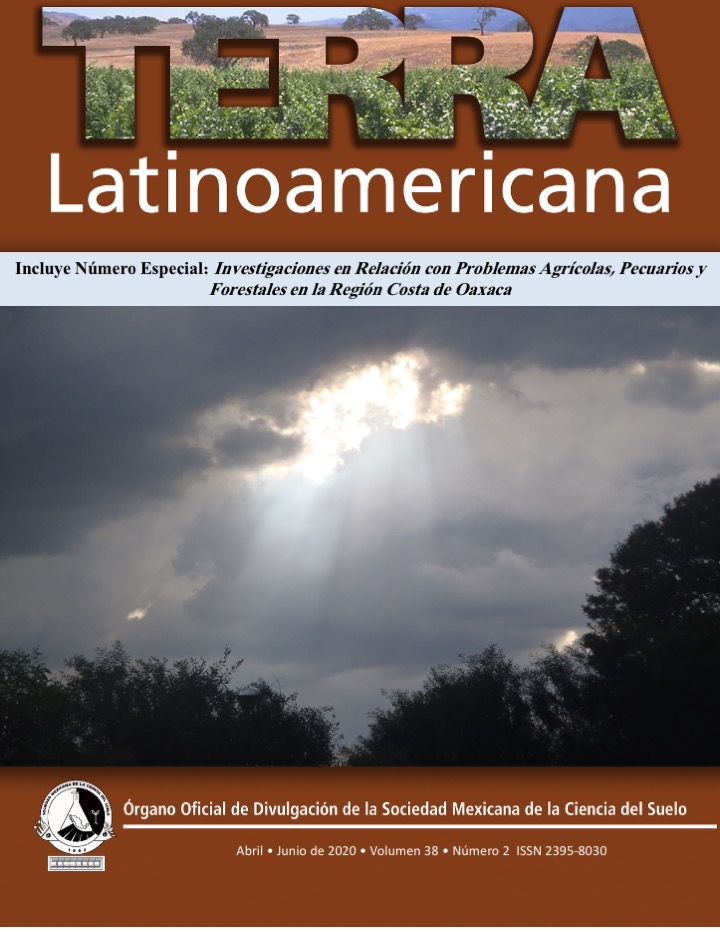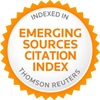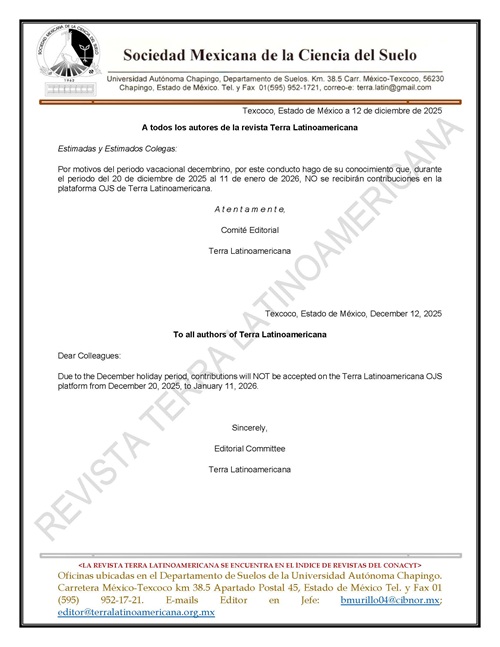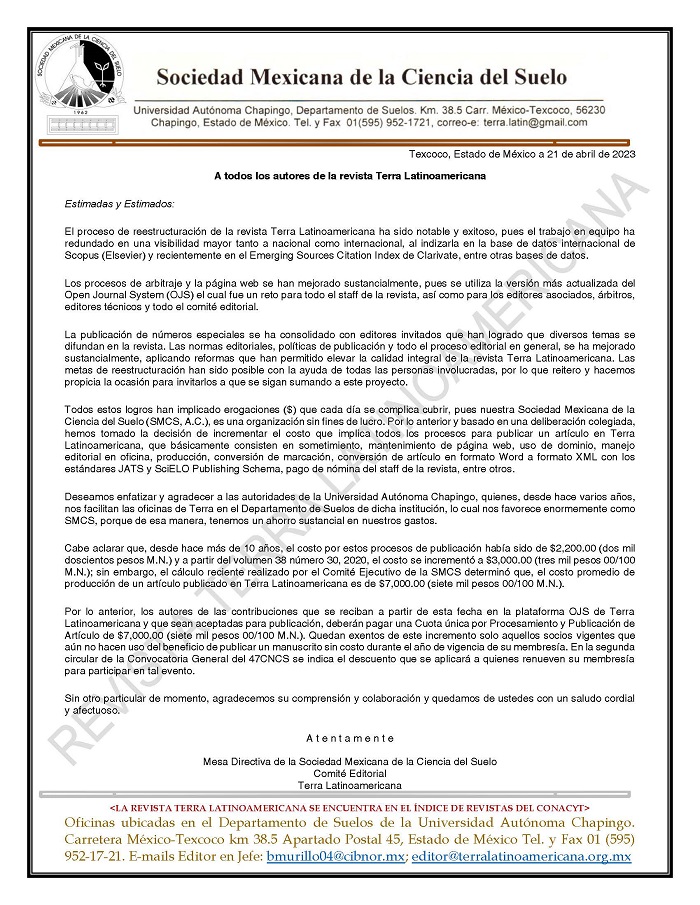Balance potasio:calcio, relación con el déficit de presión de vapor y la radiación fotosintéticamente activa en tomate de invernadero
DOI:
https://doi.org/10.28940/terra.v38i2.589Palabras clave:
balance de cationes, humedad relativa, relaciones iónicas, temperaturaResumen
La producción de tomate en invernadero demanda el conocimiento de factores técnicos como el manejo de la solución nutritiva y la interacción de ésta con las condiciones del ambiente. En la solución nutritiva pueden ocurrir desbalances entre nutrimentos como el potasio (K) y calcio (Ca); a su vez, el flujo de la savia y la translocación de éstos está influenciado por el por déficit de presión de vapor (DPV) y radiación fotosintéticamente activa (RFA). El presente estudio se realizó con los objetivos de determinar el balance óptimo de K y Ca en función del DPV y RFA prevalecientes durante el desarrollo de los frutos de los primeros 10 racimos en tomate; los primeros cinco racimos se desarrollaron durante la primavera, mientras que los racimos sexto al décimo durante el verano. Las plantas se irrigaron con soluciones nutritivas cuyos balances K:Ca fueron: 0.54, 0.64, 0.78, y 0.82. Los balances no afectaron calidad de frutos en primavera, aunque en verano, los balances 0.64 y 0.78 redujeron los sólidos solubles. En primavera, el rendimiento en cada uno de los cinco racimos estuvo influenciado por el balance K:Ca así como por el DPV; los racimos tuvieron un mayor rendimiento cuando el balance K:Ca fue de 0.64 y el DPV fue de 2.81 KPa. Durante el verano, el rendimiento más alto fue en plantas tratadas con un balance de 0.54 y el DPV fue 2.50 o 2.74 KPa. El balance K:Ca durante la primavera se correlacionó negativamente con el DPV, sin embargo, en el verano, la correlación fue positiva. El balance K:Ca óptimo debe ser de 0.78-0.82 al subir la RFA hasta un máximo de 102-142 µmol m-2 s-1, mientras que niveles extremos de RFA deben ir acompañados de una reducción en el balance K:Ca.
Descargas
Publication Facts
Reviewer profiles N/D
Author statements
- Academic society
- Terra Latinoamericana

















